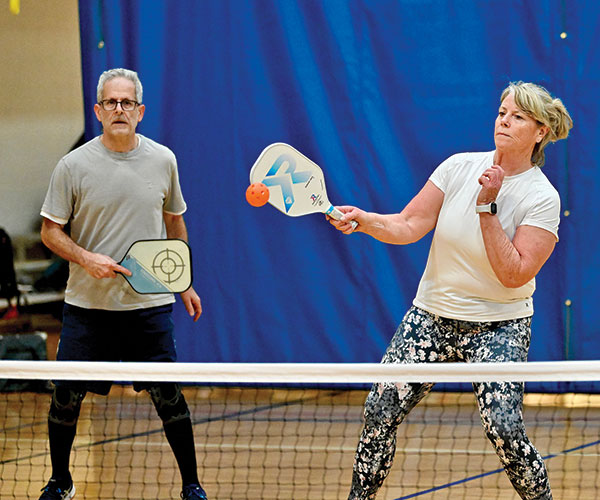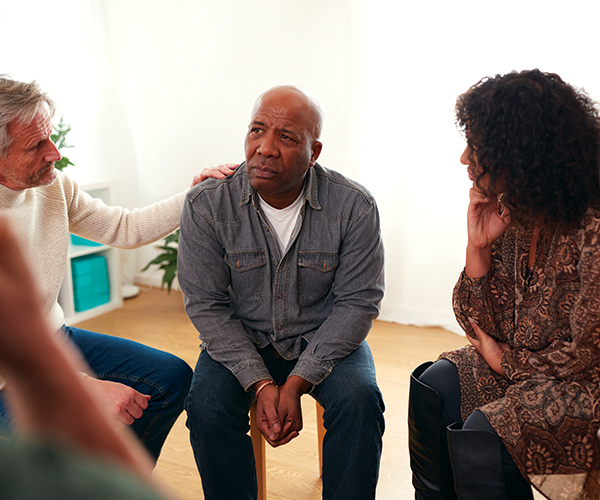It starts with little things. You pick up a few groceries at the store. You fix dinner a couple of times each week, collect and sort through the mail. You’re just checking in, helping out.
Over time, you start to arrange medical appointments, provide transportation and clean the house. You sleep over some nights, worry most days. Tethered to your frail loved one, the rest of your life — children, spouse, career — orbits unsteadily around your new role.
You fell into the job so gradually you don’t know what to call it.
“Many times, family members don’t realize that they are the caregivers,” says Stacey Rokoff, director of the school for caregivers at Fairhill Center. “They think of caregivers as medical professionals. And as family members, of course, they take care of their husband or mom.”
But providing support for an elderly loved one usually requires skills not available in textbooks. How do you bathe a parent without invading his or her privacy? How do you encourage your spouse to give up his car keys? Most of all, how do you manage caregiving responsibilities without trading your other relationships and identities as a parent, spouse, co-worker or friend? And what about time for you?
“Caregiving is not a sprint. It’s a marathon,” Rokoff compares.
And caregiving, like a marathon, takes training. Caregiver programs provide hands-on education, resources, support and respite, assuring caregivers that “the care is not always done by them, but through them,” Rokoff says.
One in four households provides some kind of care for a loved one, says Suzi Kay, manager of the family caregiver support program at the Western Reserve Area Agency on Aging (WRAAA).
“As we live longer, many people need care in the last years of their lives,” Kay relates. Caregivers spend 1.2 billion hours per year supporting loved ones, contributing to the $10.5 billion market of informal care. As the first baby boomers reach their 60s, 83 percent of them say they’ll want to age at home.
Meanwhile, the demographics of caregivers are changing, Kay adds. “More often, we have 70-year-olds taking care of 90-year-olds,” she says.
Young adults are also caregivers. “Because we are a mobile society and we’ve had industrial changes in this area, adult children of elders have gone to other places to work,” Kay explains. The grandchildren take over in times of crisis.
Meanwhile, the middle-aged “sandwich generation” cares for both young-adult children still living in the nest and aging parents. “As caregivers, this group gets whammed from both sides,” remarks Mary Schwendeman, CEO of the Alzheimer’s Association Cleveland Area Chapter.
An expanding audience for caregiving programs explains why these resources are a growing focus for centers such as Fairhill and the WRAAA.
But many caregivers do not access services at these centers because they don’t know about them or feel they don’t have the time. Instead, distressed caregivers often call help lines such as the Alzheimer’s Association’s when they reach a breaking point, Schwendeman adds. Perhaps they’ve cared for a spouse for 14 years until finally hitting an emotional wall. “They can no longer cope,” she comments.
Yet some, already stressed, are still reluctant to spare the “luxury” of time. “They don’t give themselves the permission to go to a two-hour support group to build their motivation and strength,” Rokoff says.
For this reason, caregivers’ health sometimes deteriorates faster than that of their loved ones, Schwendeman says. It’s not unusual for an Alzheimer’s caregiver to die first. “Caregivers are at a tremendous risk,” she says.
“It is a value and belief in our culture that whenever possible, you want to take care of your loved ones at home,” Schwendeman adds. “But you have to understand what toll that will take on you mentally, physically, spiritually and economically.”
The information caregivers need isn’t in a textbook. Technique comes from experience; support comes from others who have walked the same road.
“When we have children, everyone gives us advice,” Kay relates. “If you are at work, people talk about how their kids were up all night sick. But people don’t say, ‘My dad wet the bed four times last night.’ ”
Fortunately, many services are available to help caregivers:
Financial and legal.Caregivers must manage medical bills and learn the intricacies of Medicare and Medicaid. Who has power of attorney? Does a living will exist? Legal and financial planning is critical.
Emotional support.Support groups such as those hosted by Fairhill’s Care and Caregiving Center provide reassurance, understanding and a forum for ideas. Kay adds that individual counseling is available for those who “don’t do groups.” Disease-specific groups educate caregivers on how to deal with various stages of the disease and what to expect during progression.
Access to resources. The WRAAA connects caregivers to 30 agencies that provide caregiving training in the five-county area it serves. Caregivers can also dial First Call for Help (2-1-1) or call the United Way. (See page 166 for more ideas.) Caregivers in support groups also trade information. “They tell each other where to find a good attorney, doctor or other service,” says Laura Matthews, manager of ElderCenters at Parma Community General Hospital, which provides adult day care and caregiving services.
Hands-on training. “Personal care can be an area of friction,” Matthews says. Privacy, pride and frailty make assisting with daily life activities frustrating for caregivers. Hands-on training gives caregivers more confidence in these situations. Fairhill teaches these skills as part of its six-week caregiver crash course called School for Caregivers. A similar program on practical tips is part of the Alzheimer’s Association’s three-part education series.
Respite. Caregivers notoriously help everyone but themselves. They retire hobbies, sacrifice time with children, neglect opportunities for enjoyment and overlook signs of stress that deteriorate their physical and mental health. Respite allows caregivers to take a recess from their responsibilities.
Kay emphasizes a key message to caregivers: “Accept help,” she urges. Establish a care plan before your loved one enters crisis mode so resources are at your fingertips, she adds. If you don’t know where to find help, the WRAAA serves as a sort of switchboard, Kay explains.
“If you are a caregiver anywhere, there should be someone you can call, and there is,” she says. “There is a relief that comes with saying, ‘I’m getting help,’ and getting the right information when you need it.”



